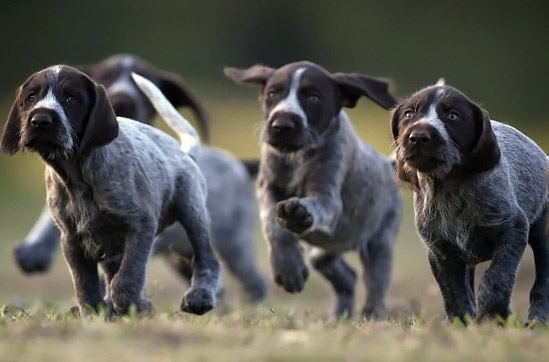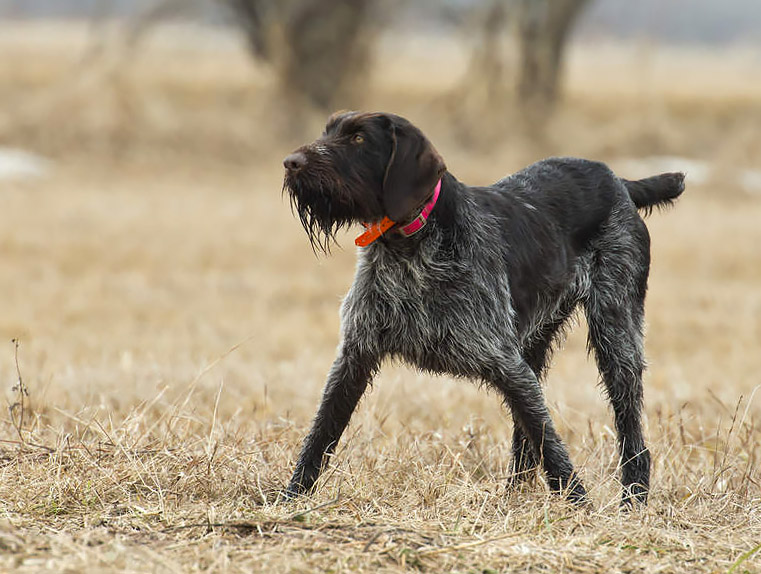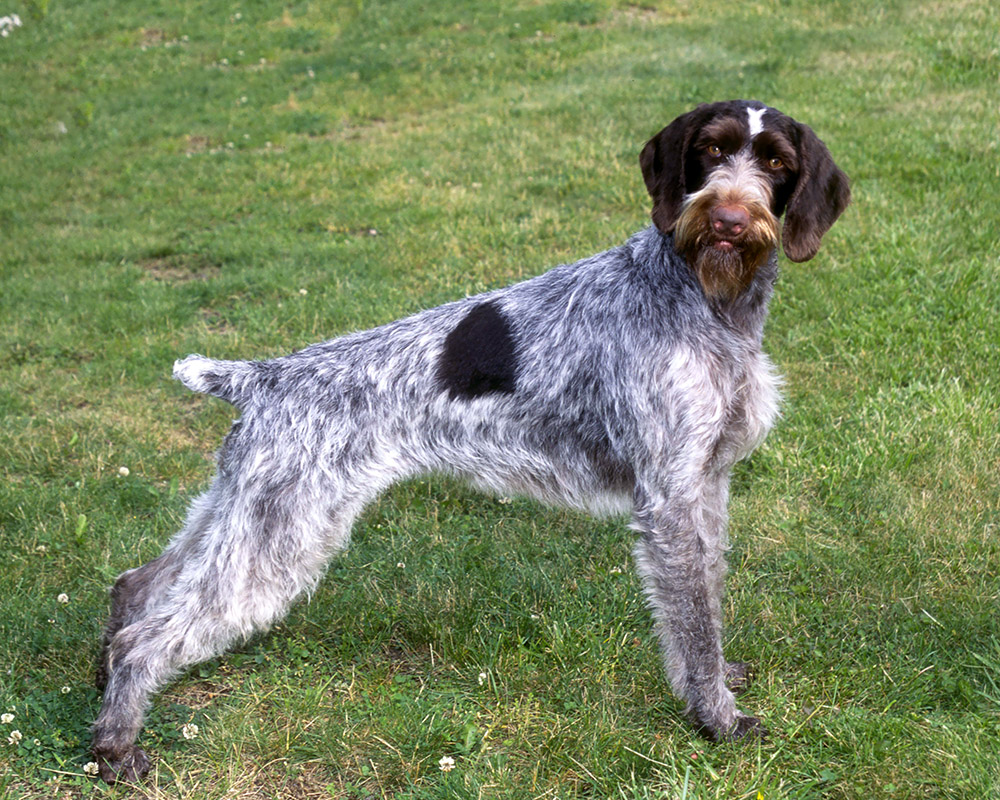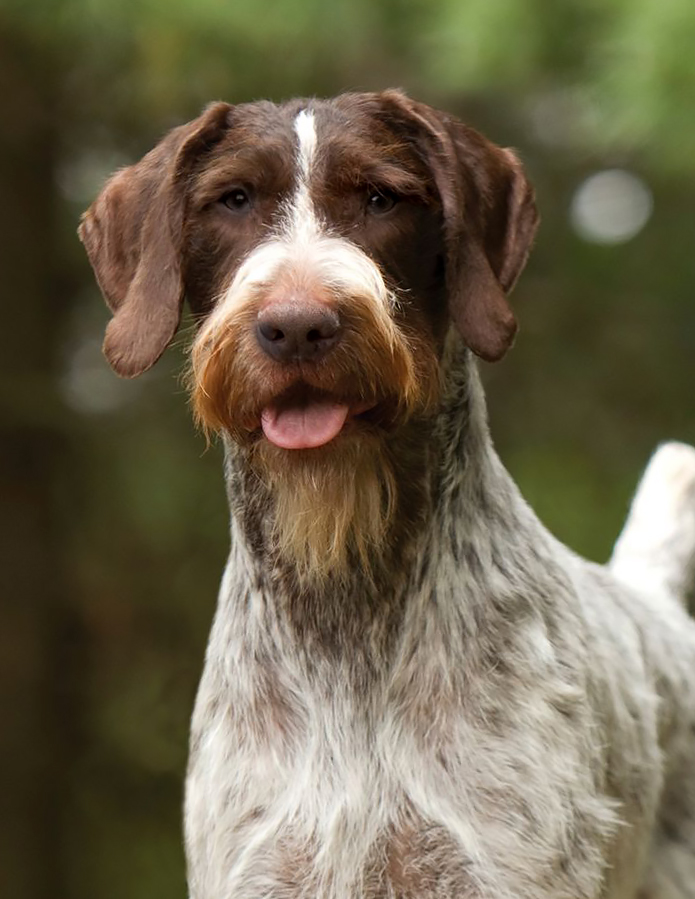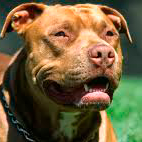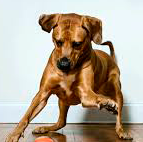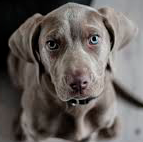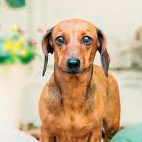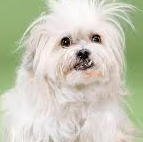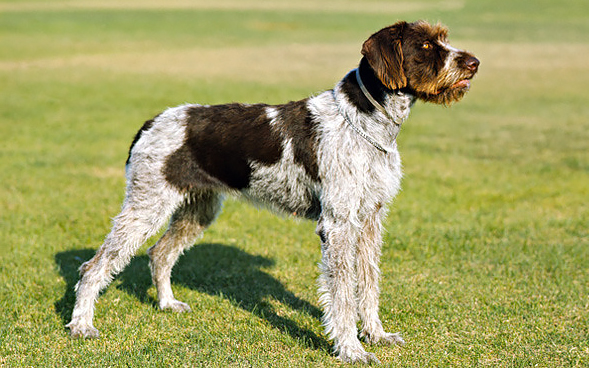
German Wirehaired Pointer
German Wirehaired Pointer pictures ➜
COUNTRY OF ORIGIN:
Germany
UTILIZATION:
Versatile Hunting Dog
BRIEF HISTORICAL SUMMARY
The Deutsch-Drahthaar is a wire-haired Pointer, the breeding origin of which is based on the ideas of “Hegewald” (Sigismund Freiherr von Zedlitz und Neukirch) and dates back to the end of the 19th century (Griffon Korthals). Since the turn of the century the breed has been selectively bred with the specific aim of obtaining an assertive and working-efficient wire-haired German gundog. Following the principle “efficiency should define the type”, and by consequent consideration of the breeder’s discretion to obtain from the best stock of the wire-haired types (Pudelpointer, Griffon Korthals, Deutsch-Stichelhaar) and by adding Deutsch-Kurzhaar, in a short period of time a working gundog was created which excels, due to his versatility and his practical weather-resistant coat. Within a few decades, due to these qualities, the Deutsch-Drahthaar turned out to be the most preferred and reliable amongst the large working gundogs in Germany and in many countries of the world.
GENERAL APPEARANCE
Pointing dog of noble appearance, with an attentive and energetic expression, and with a hard coat which provides full protection of the skin. His movements should be powerful, wide-reaching, fluent and harmonious.
IMPORTANT PROPORTIONS
Length of body to height at withers almost equal. Length of body may exceed height at withers up to 3 centimeters.
BEHAVIOUR AND CHARACTER
Solid, controlled, balanced, not timid of game, neither shy nor aggressive.
HEAD
Matches the sex and the substance of the dog.
The axes of the skull and the bridge of the nose are slightly divergent.
Cranial region:
Flat, moderately wide, only slightly rounded at the sides of the skull; clearly defined zygomatic arches.
Stop: Clearly defined.
Facial region
Nose: strongly pigmented conforming to the colour of the coat. Well-opened nostrils.
Muzzle: long, broad, strong and deep; slight ram’s nose.
Lips: Thick, tight fitting and not overhanging; good pigmentation conforming to the colour of the coat.
Bite: Well developed teeth; strong jaw with a perfect regular and complete scissor bite (42 teeth in accordance with the teeth formula) : the outer surfaces of the lower incisor teeth engage vertically and without gap with the inner surfaces of the upper incisors.
Eyes: As dark as possible, neither too deep set nor protruding, with lively and alert expression; close fitting, well pigmented eyelids.
Ears: Medium large, set high and broad, not folded.
NECK: Medium long, strongly muscled, slightly arched and dry.
BODY
Topline: Straight and slightly sloping.
Withers: Well defined.
Back: Firm and muscular.
Loin: short, broad and muscular; broad pelvis.
Croup: Long and broad, slightly sloping and well muscled.
Chest: Broad and deep with well defined fore-chest, with the sternum reaching back as far as possible; ribs well sprung.
Underline: Dry, elegantly arched; slightly tucked up belly.
Tail: Continuing the line of the back, carried horizontal or slightly upward, not vertical; neither too thick nor too thin. Appropriately docked for hunting purposes. (In countries where tail-docking is prohibited by law, the tail can remain untouched. It should reach down as far as to the hocks and be carried straight or slightly sabre-fashion).
LIMBS
Forequarters: General: Viewed from the front, straight and parallel; viewed from the side, the legs are well placed under the body. The distance from the ground to the elbows equals more or less the distance from the elbows to the withers.
Shoulders: Shoulder-blades well laid back and strongly muscled. Shoulder-blade and upper arm well angulated.
Upper arm: As long as possible, well muscled and dry.
Elbows: Close to body, neither turned in nor out. Upperarm and forearm are well angulated.
Forearm: Lean, straight and vertical; strong bone.
Pastern joint: Strong.
Pasterns: Slightly sloping.
Front feet: Oval to round-shaped, with close-knit toes; well-cushioned, tough, resistant and well pigmented pads. Footing parallel, neither turned in nor out when standing or moving.
HINDQUARTERS
General: Viewed from behind straight and parallel. Good angulations in stifles and hocks; strong bone.
Upper thigh: Long, broad and muscular, with good angulation of pelvis with femur.
Stifle: Strong, with good angulation of upper- and lower thigh.
Hock joint: Strong.
Hocks: Short, vertical to the ground.
Hind feet: Oval-round with close-knit toes; well cushioned, tough, resistant and well pigmented pads. Footing parallel, neither turned in nor out when standing or moving.
GAIT: Good reach in the forequarters and good driving power in the hindquarters. Front- and hindlegs moving straight and parallel. Proud carriage.
SKIN: Close and tight, not wrinkly.
COAT
Texture of the coat: Wirehaired, hard, close-fitting and tight. Outer coat approximately two to four centimeters long, thick waterresistant undercoat. The outlines of the body should not be hidden by too long a coat. Harshness and density are required to give the dog the best possible protection against weather factors and injuries. The coat of the lower parts of the legs as well as of the chest and belly should be shorter but dense. The coat on the head and ears should be shorter and denser at the same time, but by no means softer. Marked eyebrows and a strong beard, not too long, but as harsh as possible, emphasize the energetic expression.
COLOUR: Brown roan, black roan, with or without patches; brown with or without white spot at the chest. Other colours are not permitted.
SIZE
Height at withers: Dogs: 61 to 68 centimeters.
Bitches:57 to 64 centimeters.
FAULTS: Any departure from the foregoing points should be penalized in exact proportion to its degree.
SERIOUS FAULTS: Short, pointed and narrow muzzle; weak bite, pincer-bite, partial pincer-bite; very loose eyelids; sway back, roach back; overbuilt; sternum too short; clearly turned in or turned out elbows; cow-hocked, bandy or bow legs close behind in stance as well as in movement; pacing, stilted or mincing gait; thin coat, missing undercoat.
DISQUALIFYING FAULTS: Lack of assertiveness; not steady to gunshot or game-shy; over- and undershot bite, irregular bite, missing teeth except for P1; entropion, extropion; innate bob- or stump tail, kinked tail; faulty pigmentation, eyes of different colours.
N.B.: Male animals should have two apparently normal testicles fully descended into the scrotum.


